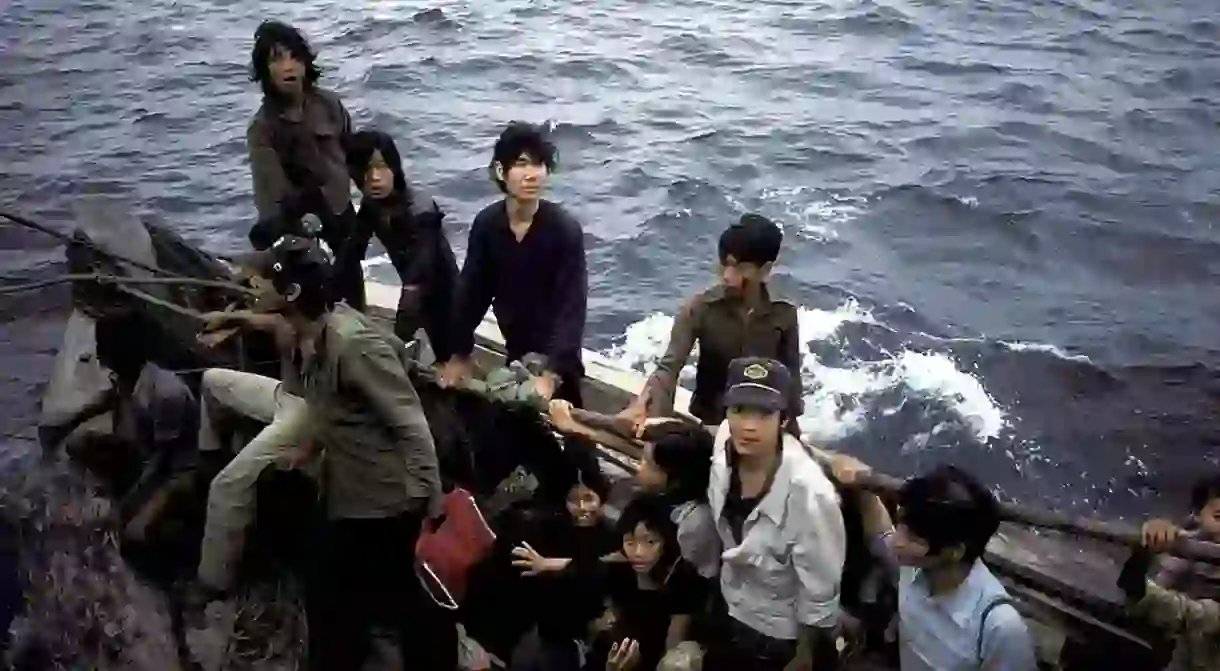A History of The Vietnamese Community in Australia

Vietnamese-Australians form one of the biggest and most vibrant multicultural communities in Australia, but it hasn’t always been smooth sailing—literally. Discover the incredible story of how ‘Việt Kiều’ have become the sixth largest migrant community in the country.
Refugees
Before the fall of Saigon ended the Vietnam War in 1975, fewer than 2,000 people born in Vietnam lived in Australia. But when the Communist North Vietnamese captured the capital and renamed it Ho Chi Minh City, an estimated 800,000 people were forced to leave their homeland by boat and seek safety in another country between 1975 and 1995, including about 90,000 who were processed in Australia.

The first Vietnamese refugees arrived in Australia by boat in April 1976, sailing into Darwin Harbour. The journey was long and extremely treacherous—disease, starvation, overcrowded vessels, storms and pirates were all imminent dangers—and public sentiment was not always kind on these asylum seekers disparagingly labelled “boat people”. Despite the common image of Vietnamese refugees arriving in Australia by boat, the vast majority arrived by plane after being selected from Southeast Asian refugee camps by the Australian government.

Vietnamese people were the first large group of migrants to arrive following the end of the ‘White Australia Policy’, a series of archaic and discriminatory laws designed to prevent immigration from non-European nations. Although the White Australia Policy was legally abolished in 1973 and the Racial Discrimination Act was instituted in 1975, public opinion was still not unanimously in favour of large scale resettlement rarely seen before, and many new Vietnamese-Australians faced abuse and racism.
Migration
By the 1990s, the number of Vietnam-born migrants choosing to emigrate to Australia began to overtake the number of refugees, and the Việt Kiều population had passed the 150,000 mark by the 2001 census. These days, according to the 2016 census, almost 300,000 Australians have Vietnamese ancestry, with nearly 220,000 born in Vietnam.

That makes Vietnamese the sixth largest overseas-born population in Australia, trailing only England (907,572), New Zealand (518,466), China (509,555), India (455,389), and the Philippines (232,386). In fact, ‘Nguyen’ has been named the 13th most common surname in Australia, and is projected to overtake ‘Smith’ as the country’s most common surname by 2023.
Today
The success of the Vietnamese community has often been held up as an example of Australia’s vibrant multiculturalism over the last four decades, and Vietnamese-Australians make an enormous contribution to every level of Australian society. Comedian Anh Do, restauranteur and TV presenter Luke Nguyen, South Australian governor Hieu Van Le, businesswoman and former Young Australian of the Year Tan Le, and IT entrepreneur Huy Truong are all well known in public life.

Like so many ethnic communities, Vietnamese-Australians’ most visible contribution to Australian life is food, with bowls of phở and rolls of bánh mì being slurped up and munched on in every corner of the country. Melbourne (specifically around Footscray, Sunshine and Springvale) and Sydney (Cabramatta, Bankstown and Fairfield), in particular, are blessed with mouthwatering Vietnamese cuisine.
Memorials to the courageous refugees who fled Vietnam by boat are also found in Footscray’s Jensen Reserve in Melbourne, Saigon Place in Sydney’s Bankstown, Wade Street Reserve in Perth, and Kangaroo Point in Brisbane.













